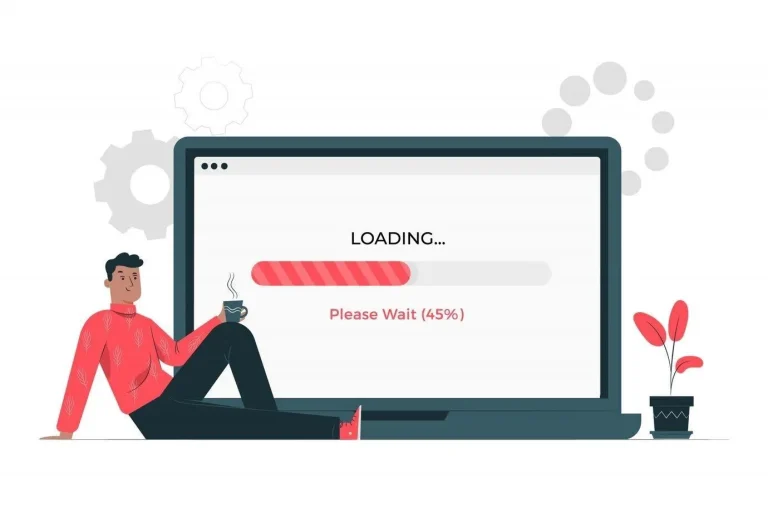Digital advertising works wonders when it comes to influencing the buyer’s purchase decision or increasing brand awareness. As per TechTarget, 84% of buyers are more likely to engage with the brand if they come across its banner online. Thus, it’s no surprise that brands invest heavily in online advertising to reach targeted customers.
At the same time, publishers create content to meet the needs of these curious customers. This attention of the buyers gives both publishers and advertisers a chance to increase their revenue through ads. Publishers can use the remnant spaces on their website to monetize the content by displaying the ads, while advertisers can use it to attract interested buyers. This interdependence has led to the growth of many ad technologies to serve the right media to the right user at the right time.
However, this evolution has also given birth to certain complex acronyms and jargon that the two players find difficult and confusing to apprehend. CPM is one among them. This article delves deeper into CPM, its importance in the advertising industry, and how publishers can strategically use it to maximize their ad revenue.
Table of Contents
What Is CPM?
CPM stands for cost per mille* and displays the cost of serving ads to 1000 people, aka impressions/views. It is one of the most common pricing metrics in online advertising. Here, publishers are paid based on views and not based on clicks or conversions.
It is important to note that CPM only accounts for viewability. It means that it does not consider whether the user has noticed it or has taken some action. Advertisers love it as the cost is set for large numbers of impressions rather than only one. They often use this for ad campaigns centered around brand awareness.
Many publishers prepare media kits for advertisers to inform them about their reach, audience base, and other important parameters, along with the rate chart.
*Mille is a Latin word meaning thousands.
How to Calculate CPM?
To calculate CPM, you divide your total earnings by the number of impressions generated, multiplied by 1000.
For example, let’s say you earned $150 from your leaderboard banner ad. Your website generated 50,000 impressions. So, what’s the CPM?
The calculation for CPM:

Therefore, the CPM you get per thousand impressions for your leaderboard banner ad is $3.
Why Is Understanding CPM Important for Publishers?
CPM is often considered a metric used by advertisers, whereas, for publishers, it is RPM (revenue per thousand impressions). However, both- RPM and CPM are important metrics for publishers as RPM is used and popularized by Google AdSense (an ad network), whereas CPM is often the preferred metric used in real-time bidding. If you want to understand the differences in detail, then click here.
Reasons to care about CPM:
- It enables you to dive deeper into your revenue and discover what performed well and what went wrong.
- It helps you to measure the value of your ad inventory and determine the best way to monetize it.
- By understanding CPM and observing the performance of ad inventories, you can make data-driven decisions. They can be about which ad campaigns to run, how much to charge for ad space, and how to optimize their ad placements to maximize revenue.
- CPM also helps you identify the most profitable ad formats and placements. This can further help you to optimize your websites for better ad visibility and engagement.
- The knowledge of CPM, especially the rise and fall in its rate over the pages throughout the year, helps you to optimize your content and work on user experience.
- It is also important to note that your RPM depends on CPM and significantly impacts your overall ad revenue.
What Is a Good CPM?
CPM is not something that can be measured as good or bad. However, they can be high or low throughout a financial year. Several factors, like niche, audience base, demography, viewability, device, ad size, seasonality, etc., play an important role in determining the CPM rate.
For example, publishers belonging to a high-value niche like technology and finance news might get good CPM throughout the year compared to other publishers. Similarly, publishers, especially the ones related to the festival’s needs, expect a rise in CPM during the holiday seasons compared to the rest of the months. Advertisers often prefer to pay more for targeted users from tier-1 geographies like the USA, Canada, the UK, etc. Ad networks also decide the future of CPM as they are the intermediaries between the publishers and the advertisers. Hence, the quality of the demand they bring will determine the value of the inventories.
When it comes to ad formats, publishers must remember that video ad inventories are often sold at higher CPM compared to display ad spaces. This information can help publishers to optimize their ad placements and formats to maximize revenue.
If you want to explore the realm of CPM in detail, we are here to help.
Good CPM for Display Ads
A good CPM for display ads can vary significantly based on different factors. A few of the most important factors are – the type and quality of the ad creative, the audience being targeted, industry, ad placement, and the website or app where the ad is being displayed. Generally, a CPM between $2 and $3 is considered good for display ads.
Here is a glimpse of average CPMs for display ads across different platforms:
| Platform | Average CPM Range (for U.S.) |
| Google Display Network | $2.00 – $3.00 |
| $8 – $12.15 | |
| Taboola | $3.00 – $5.00+ |
| Outbrain | From $1.00 |
7 Tips to Increase CPM
- Increase website traffic: The more visitors your website has, the more ad impressions you can serve, leading to higher CPM. How can you achieve this? Follow these three:
- Create high-quality content full of helpful information backed by data whenever and wherever needed. It must serve the purpose and satisfy the hunger of the reader. And publish regularly.
- SEO is your partner in crime here. Don’t plan anything without SEO. Use SEO best practices to improve your website’s ranking in search results, making it more visible to your visitors.
- You have done excellent work, and now is the time to show it off. SERP will, of course, work its magic, but it will be smarter to invest in social media, email marketing, or even paid advertisement to attract and drive traffic.
2. Target high-value audiences: Identify the most valuable demographics of your advertisers and tailor your content to attract them.
- If you are an ad publisher, then understand your audience’s demographics, interests, and behaviors to identify the most valuable segments for advertisers.
- Invest your time in creating detailed profiles of the targeted audience. This will help as your guide while creating content plans or devising ad targeting strategies.
- Don’t forget audience segmentation. Segment your visitors based on data such as demographics, interests, and online behavior.
3. Optimize ad placement: Ads placed in high-visibility areas on the website maximize their chances of being seen and clicked.
- Place your ads above the fold. Here is how you can optimize your ad placement to increase revenue.
- Testing is best. Test various ad formats and ad sizes. Find which of these is working well for you: display ads, video ads, or native ads.
- Don’t forget ad refresh. After all, when has the extra money hurt? We have a bonus tip for you towards the end. Don’t forget to read.
4. Use ad networks and exchanges: Ad networks and exchanges can help you access a broader range of advertisers, which in turn can increase competition for ad space on your website and drive-up CPM.
- Not all partners are the best, and you know that already. Find the one with a strong track record of delivering high-quality ads and fair CPM rates.
- It’s time to go beyond ad networks and try ad exchanges. They connect your ad inventory with a wider pool of advertisers, potentially increasing CPMs.
- Always keep an eye on performance. Regularly evaluate the performance of different ad networks and exchanges to identify the ones that provide the best CPMs and ad quality.
5. Use best-performing ad formats: Certain ad formats, like native ads and video ads, perform best regarding user engagement.
- Publishers can experiment with different ad formats and find out what works best for their website to get more traffic. Advertisers are more willing to pay for these ad formats.
- Native ads and video ads are two of the most popular formats known to fetch you higher CPM.
- You can also use dynamic ad insertion to display relevant ads based on the user’s context or content being viewed.
6. Monitor your ad inventory: Keep an eye on your ad inventory to ensure that you’re not over-serving ads, which can decrease the value of each ad impression.
- Employ ad management platforms to monitor ad performance, optimize ad placements, and manage ad inventory effectively.
- It’s also time to analyze. Analyze ad performance data to identify patterns and make informed decisions about ad optimization.
7. Use audience segmentation: Audience segmentation based on data helps you better understand which segments are more valuable to advertisers. It also helps you improve your user experience as you will serve ads according to their interest.
- Data is king. It will help you rule the ad world. Gather user data via website analytics, email marketing campaigns, and social media interactions.
- Divide your audience into distinct segments based on their demographics, interests, behaviors, and online activities.
- You can learn more about how to do it in our blog on audience segmentation.
Discover more such tips in our detailed blogs: Tips to increase programmatic CPM – Part I & II.
Are We There Yet?
Not yet. Although CPM is a vital metric for publishers in the digital advertising industry to measure the effectiveness and profitability of online ads, it is not the only metric publishers should consider. CPM alone is not enough to guarantee revenue growth, and publishers must take a holistic approach and consider other metrics such as click-through rate (CTR) and conversion rate (CVR). By focusing on a combination of metrics, publishers can optimize their ad placements and formats to increase the value of their ad inventory.
Additionally, publishers must consider other factors like the audience, ad creatives, and targeting to increase revenue. Therefore, while CPM is an essential metric for publishers, it should be considered one of the many tools available to increase revenue.
FAQs
1. Does audience size affect CPM?
Yes, the more audience you have, the better it is. But it is also important to note that audience size alone cannot decide your CPM rate. To attract premium advertisers for higher CPM, you must create a niche audience base and work on other key factors, including inventory placements, formats, etc.
2. What causes the drop in CPM?
Several factors can cause a dip in the CPM. Audience targeting, placement of ad inventories, quality of the content, decrease in demand, seasonality, etc., are a few of the many factors that can affect the CPM.
3. What is an ad impression?
An ad impression, also known as an ad view, refers to a single instance of an ad being displayed to a viewer.
An ad impression is recorded each time an ad is loaded and displayed on a web page, regardless of whether a user viewed it or not. This means that if an ad is loaded but not visible on the screen, for example, if it’s below the fold, it will still count as an impression.
4. What are the common pricing models?
CPM, CPC, CPI, CPA, and CPL are the most common pricing models used by advertisers. CPM is ‘cost per mille’, where publishers are paid for every 1000 impressions. CPC stands for ‘cost per click’, and advertisers pay once users click on the ad.
With CPL (cost per lead), payment is made after the user clicks on the ad and becomes a qualified sales lead. CPA (cost per action) is used when publishers get paid only after the user converts. Mobile app advertisers use CPI- cost per install, and publishers get paid when the users install the app.























